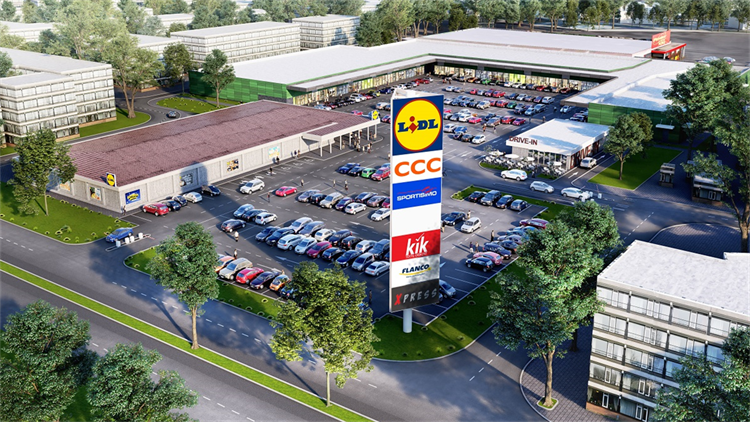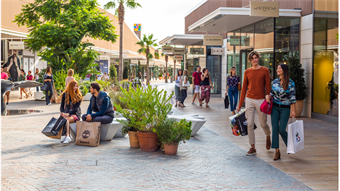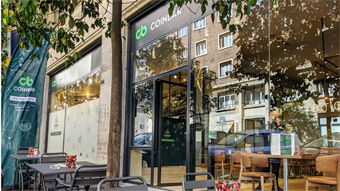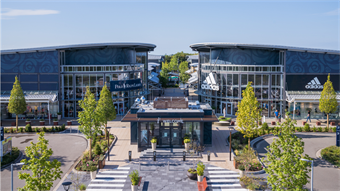Rethinking the big box
- In Strategy
- 15:47, 26 March 2020
- 13733 Views

Retail parks have gone from being the pariahs of retail to a flourishing sub-market in five short years. What happened, and what’s next?
It’s just a few short years since retail parks were flagged as one of the industry’s riskier prospects. Dominated by white goods retailers, DIY anchors and music and small electronics stores, many proved highly vulnerable as e-commerce took its first prize scalps. But subsequent asset polarisation actually served to show their potential: managed well, these car-friendly, spacious sites could still prove a success.
‘In recent years, retail parks have experienced a significant transformation with regard to the breadth of tenant mix and quality of design,’ says Silvia Jodlowski, senior research analyst at Cushman & Wakefield. ‘This asset class has become a preferred destination not only for fashion retailers but also restaurants, coffee shops and sports and leisure operators, all of which traditionally used to occupy the high street,’ she adds. ‘Flexibility, convenience and accessibility are the main attractions for new retail park occupiers and shoppers.’
In the UK, the rise of discount retailers such as Aldi, Lidl, Home Bargains and Poundland has marked another crucial shift: the bargain-hunting trend. Just as with their premium counterpart, the outlet centre, customers will travel for a good deal. GlobalData predicts that discounters are set to increase their share of the UK market by 6% to 2022, claiming 20.3% of retail sales. Equally, the rude health of retail parks has served to underline that shoppers still love their cars, and that click and collect is perhaps at its most effective when you can park right outside.
European dynamics
While retail park development has reached maturity in Western Europe, the shift to leisure and F&B in the latest schemes and a significant appetite to add value to existing stock has is still driving new development, extensions and refurbishments. European retail park floorspace increased by 2.2% in 2018, reaching 50.1 million m2. France was the most active country, accounting for more than a third of total new space in Europe. Spain took second position with 165,000 m2, followed by the United Kingdom with 121,000 m2 of new space, according to Cushman & Wakefield. Less stock in Central & Eastern Europe is allowing smaller schemes in minor cities and suburban areas to blossom, boosting opportunities for local developers.
Investors who are looking to acquire retail warehouses in a range of countries would do well to research the foibles of individual territories, suggests Tjard Martinus, head of retail research EMEA at JLL, as different laws and tastes translate into significant European divergence. ‘The dynamics vary massively by country and even by region, because local legislation can have a big impact on big box retail and retail park development. While in the UK, you have a very diverse tenant mix, it’s much more limited in the Netherlands,’ he notes. ‘In Germany, local building law and spatial planning law may require permission to change functions. The regulations contained can concern the distance between several similar shops, the preservation of the cityscape, noise protection, the location and the product offering.’
However, Martinus agrees that evolution of the tenant-mix has been key for the sector’s resilience. This notably also includes initiatives on the retailer side to improve footfall. ‘While much electronics retailing has moved online, the likes of MediaMarkt have moved toward providing more experience in-store, as well as selectively reducing store sizes,’ he says. ‘The other interesting trend is in grocery retailing.’
While food retailers have been significantly less affected by the sales shift online – Martinus suggests that e-commerce penetration of grocery retailing in most European markets ranges from 1% to 5%– supermarket brands have been in active evolution. ‘There is also the shop-in-shop format – Tesco hosts some branches of Next, while Sainsbury’s bought Argos in 2016. This is a quick way to fill up a lot of store space, instantly offer more products, and generate additional income.’ Meanwhile, in France, E.Leclerc has decided to allocate certain corners of stores to sell second-hand goods, with up to 130 stores across France adopting the trend. ‘Customers take a cut from the sales, while the stores benefit from having a wider product range,’ he notes. ‘Rival Carrefour has converted some roofs into vegetable gardens, creating community spaces and offering a sustainable solution to its portfolio.’ In another example, Dutch supermarket Jumbo has introduced a ‘Foodmarkt’, a hybrid F&B area allowing shoppers to eat what they buy on-site.
Despite the current wave of dynamism, there is more to be done. ‘There are still plenty of retail parks which have never been as in-demand as shopping centres, so investors are seeing lots of opportunities to unlock value by increasing dwell times,’ Martinus notes. ‘Investors are also starting to explore additional services like medical units and leisure.’
An impressive rollcall of institutional funds underlines the sector’s mainstream appeal. In Germany, retail specialist Redos picked up the Christie portfolio a few years ago in partnership with the Morgan Stanley real estate fund (MSREF) which comprised four hybrid out of town shopping centres in need of work. Madison Realty recently entered the venture by buying out MSREF, in a deal which allowed Redos to increase its stake. ‘The Christie portfolio represented a radical transformation opportunity,’ says Christine Hager, managing director and head of shopping centre asset management at Redos. ‘These assets all had huge DIY / home improvement concessions – some over 10,000 m2 - which were outdated as a concept. Our plan was to divide those big units into smaller and mid-size units, extend the existing malls, and add significant food and beverage (F&B) anchors. With all the schemes, sustainability, F&B and leisure have been the prime focus.’
Other, more recent deals prove the resilience of the asset class in a range of geographies. In January, Mitiska Reim, a specialist investor in convenience-based retail parks in Europe, completed one of the largest ever retail park transactions in Portugal with the acquisition of a portfolio of four Portuguese retail parks previously owned by Blackstone and managed by Multi Portugal. Southern Europe looks like a territory to watch, with both Spain and Italy lining up two of the biggest development pipelines across the continent for this year, even if the biggest pipeline is in France – where retail park development is overtaking shopping centre development. It’s all a quite different story to the gloom of just a few years back, although site choice remains critical.
‘The next frontier in big box retail is technology, which is already improving retailer margins,’ notes Martinus. ‘From inventory management to self-checkout, instore robots controlling stock to AI developments, there’s lots to look forward to.’
Shrink wrapped: big boxes in the city
While the turnaround in retail park fortunes has seen many high-street retailers adapt to larger units, there is also a growing appetite for traditional big box brands to shrink to fit. Sports retailer Decathlon has been experimenting with city centre stores, while out-of-town behemoth Ikea is the latest to flirt with life downtown. In January, Ingka Centers, part of Ikea’s parent company Ingka Group, acquired Kings Mall shopping centre in Hammersmith, London from Schroder UK Real Estate Fund, unveiling plans to transform the shopping centre into a new Ikea-anchored urban, mixed-use destination.
Comprising 27,133 m2 of space, including 604 parking spaces, Ingka said that Kings Mall will be the first mixed-use project in a downtown location, anchored by an Ikea city store. The new strategy is designed to complement Ikea’s rollout of smaller format stores in inner city locations in response to global urbanisation trends, changing customer behaviour and the digitalisation of retail.
‘Our urban projects are all about getting closer to more people, and a revamped Kings Mall will be an ideal location for reaching millions of Londoners,’ said Gerard Groener, Ingka Centres’ managing director. ‘Hammersmith is a place where people work, live and spend their leisure time, and we want to be part of it. It is one of London’s main retail, commercial and residential centres, and has excellent public transport links.’
The initiative in the UK follows a programme to roll out urban projects in China, where downtown schemes are already taking shape in the cities of Shanghai, Changsha and Xi’an. Set to open in the coming years, they combine features including Ikea inspired offices and apartments as well as retail and public spaces.






